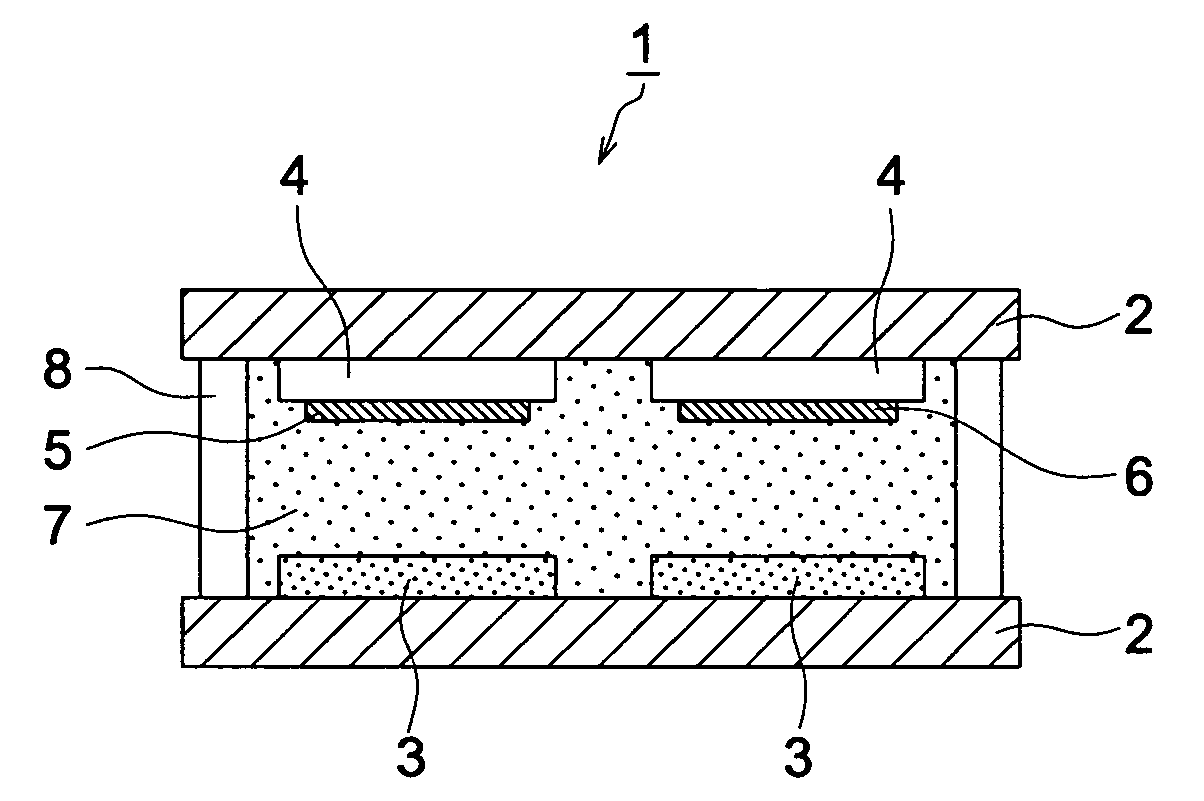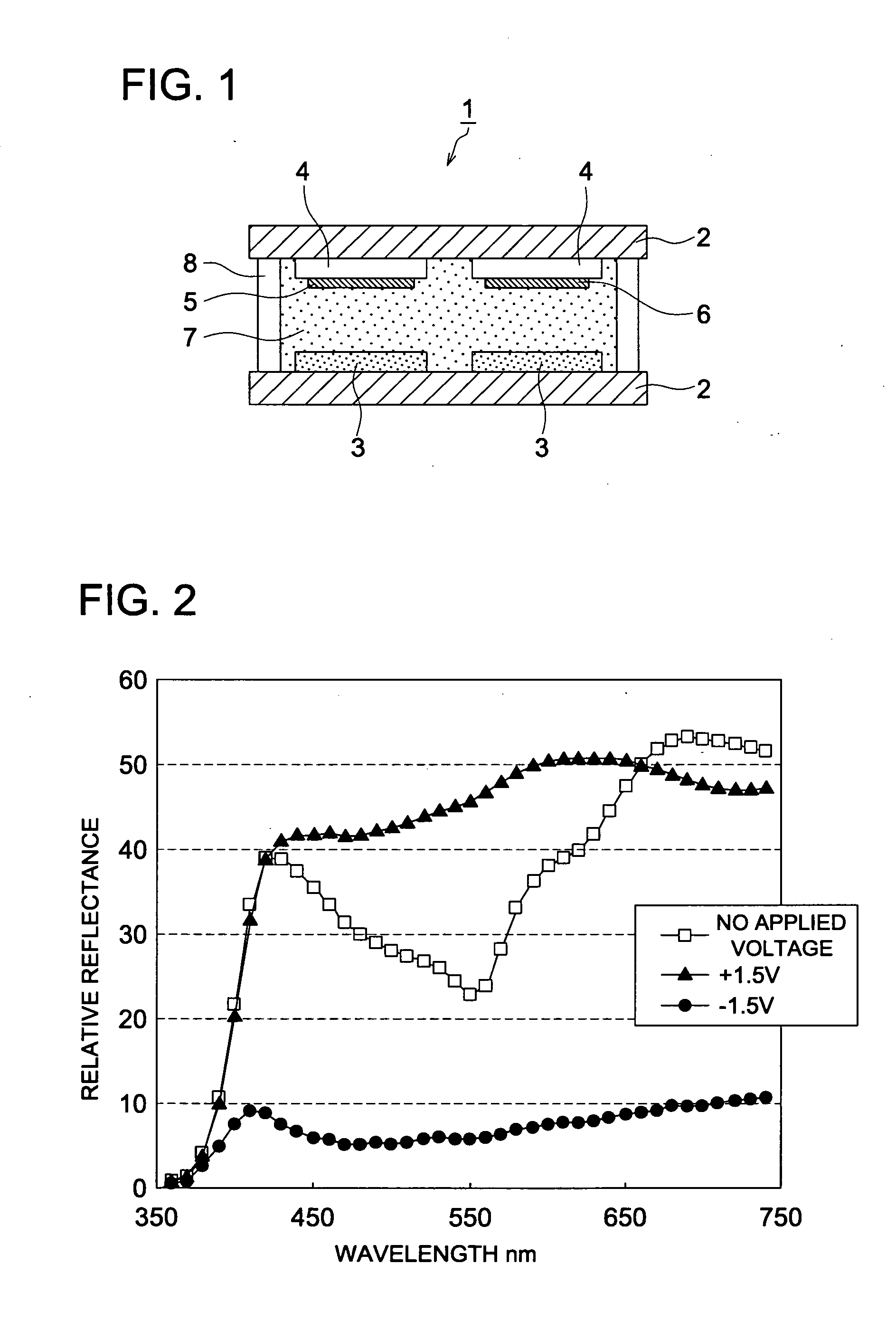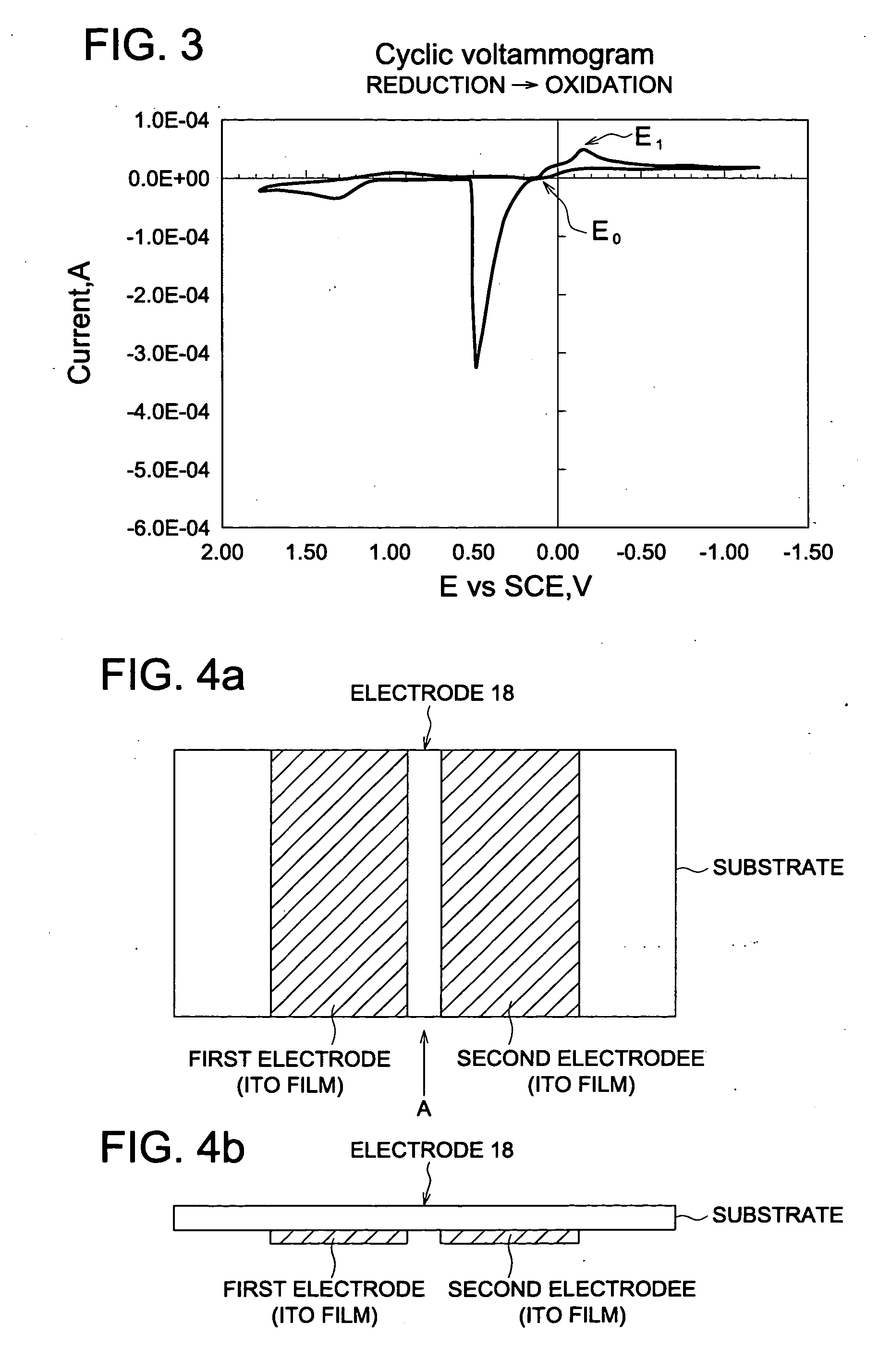Display element and driving method thereof
a technology of display elements and components, applied in non-linear optics, instruments, optics, etc., can solve problems such as difficulty in mentioning sufficient performance, increase in electric power consumption, and difficulty in displaying white, and achieve the effect of simple structure of the element member
- Summary
- Abstract
- Description
- Claims
- Application Information
AI Technical Summary
Benefits of technology
Problems solved by technology
Method used
Image
Examples
example 1
Preparation of Display Element 1
(Preparation of Electrolyte Liquid 1)
[0173]Added to 2.5 g of dimethyl sulfoxide were 0.15 g of sodium iodide, 0.1 g of silver iodide, 0.05 g of polyethylene glycol (average molecular weight: 500,000) and 0.01 g of Exemplified compound (1-68), which were completely dissolved, to obtain Electrolyte liquid 1.
(Preparation of Electrode 1)
[0174]Films of ITO (Indium Tin Oxide) of 130 μm width with 145 μm interval were formed on a 1.5 mm thick 2 cm×4 cm glass substrate according to the method known in the prior art, whereby Electrode 1 which was a transparent electrode was obtained.
(Preparation of Electrode 2)
[0175]Silver-palladium electrodes of 0.8 μm thick and 130 μm width with 145 μm interval were formed on a 1.5 mm thick 2 cm×4 cm glass substrate according to the method known in the prior art, whereby Electrode 2 was obtained.
(Preparation of Electrode 3)
[0176]On Electrode 2 of which peripheral part was edged with an olefin sealant containing 10% by volume...
example 2
Preparation of Display Element 2
[0179]Electrolyte liquid 2 was prepared in the same manner as the preparation of Electrolyte liquid 1 use in Display element 1 described in Example 1 except that 0.3 g of titanium oxide was added in the electrolyte. Electrolyte liquids 3 and 4 were prepared in the same manner as the preparation of Electrolyte liquid 2 except that Exemplified compound (1-68: yellow) was changed to equimolar Exemplified compounds (1-70: magenta) and Exemplified compound (1-147: cyan), respectively.
[0180]The peripheral part of Electrode 2 described in Example 1 was edged with an olefin sealant containing 10% by volume of spherical glass beads having an average particles diameter of 20 μm, and further a dividing wall having windows of 100 μm square was formed using photolithography at pixels where Electrode 2 crossed with Electrode 1, whereby Electrode 4 was formed. Into the windows, Electrolyte liquids 2, 3, 4 were poured using a dispenser so as to form a Bayer arrangeme...
example 3
[0182]Inks 1-3 were prepared by dissolving 0.3 g each of Exemplified compound (1-73: yellow), Exemplified compound (1-74: magenta) and Exemplified compound (1-152: cyan), respectively, in 2.5 g of ethanol.
[0183]Added to 2.5 g of dimethyl sulfoxide were 0.1 g of silver iodide, 0.15 g of sodium iodide and polyethylene glycol (average molecular weight: 500), whereby Electrolyte liquid 5 was prepared.
[0184]Films of ITO of 130 μm width with 145 μm interval were formed on a 1.5 mm thick 2 cm×4 cm glass substrate according to the method known in the prior art and 10 g / m2 of titanium oxide (average particle diameter of 25 nm) was applied on it, followed by drying at 350° C. for 1 hour, whereby Electrode 5 applied with a porous metal oxide layer was obtained. Electrode 6 was prepared by separately applying Inks 1-3 on Electrode 5 so as to form a Bayer arrangement using a commercially available inkjet coating apparatus. Electrodes 6 and 1 were faced each other so that the striped electrodes o...
PUM
| Property | Measurement | Unit |
|---|---|---|
| distance | aaaaa | aaaaa |
| distance | aaaaa | aaaaa |
| diameter | aaaaa | aaaaa |
Abstract
Description
Claims
Application Information
 Login to View More
Login to View More - R&D
- Intellectual Property
- Life Sciences
- Materials
- Tech Scout
- Unparalleled Data Quality
- Higher Quality Content
- 60% Fewer Hallucinations
Browse by: Latest US Patents, China's latest patents, Technical Efficacy Thesaurus, Application Domain, Technology Topic, Popular Technical Reports.
© 2025 PatSnap. All rights reserved.Legal|Privacy policy|Modern Slavery Act Transparency Statement|Sitemap|About US| Contact US: help@patsnap.com



